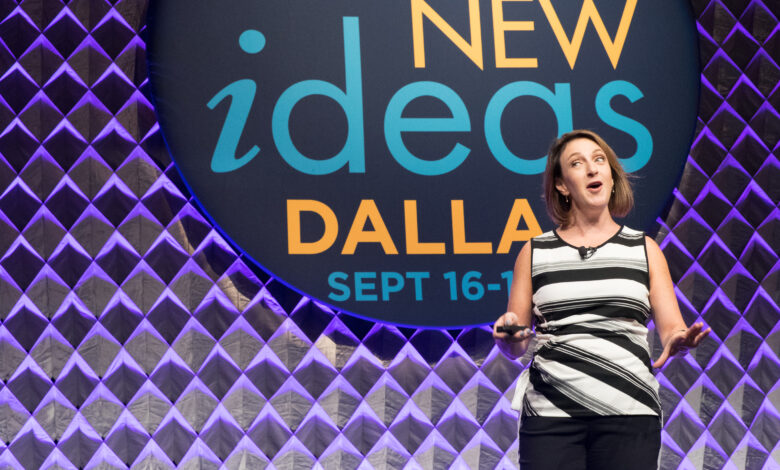Speakers Spark ‘New Ideas’ at TSAE’s Annual Conference


Creativity is a muscle that you need to work out and strengthen into a tool that can build something unexpected.
For artist and founder of the Frontier Project Noah Scalin, that meant taking a familiar object – a skull – and presenting it a new, creative way every day for a full year. Scalin spoke at the TSAE’s New Ideas Conference about how creativity is the driving force behind innovation in many organizations.
To promote creativity, Scalin encouraged what he called the “Big 7.” They’re practices that he uses to continually learn and grow in his work.
1. Dream Small – Take steps to build something bigger.
2. Let Go of Perfection – Not every version is a final draft. If you think of it that way, it’ll always fall short of your expectations.
3. Embrace Limitations – Encourage rules. If you work within a box, you’ll have to push off the walls and think in new ways.
4. Cultivate the Unexpected – Create a space where anything goes and “no” isn’t an option.
5. Expand Your Default Settings – “The way we’ve always done it” is the death knell to creativity.
6. You Can’t Do It Alone – Let people in who will collaborate and ask questions. Remember: 1 + 1 = infinity.
7. Inspiration is Everywhere – Go out into the world and do things.
***
Fail Faster to Build Resilient Leaders
Do you want to be comfortable, or do you want to live with courage? That’s the choice that each person has to make.
Discomfort is a catalyst for growth, and failure is there to teach us – but only if we let it. Great leaders fail fast, learn from their mistakes and adapt quickly, speaker and author Anne Grady told the audience at TSAE’s New Ideas Conference.
Upwards of 70 percent of workers today are disengaged. They’re uninspired or stuck in a rut, doing the same thing every day with the same result. After all, we are creatures of habit, but our brains don’t know the difference between a good habit and a bad habit.
When we’re young, we have a beginner’s mindset, focused on growth and soaking up knowledge. As we get older, however, we look for evidence to back up the beliefs we hold. That fixed mindset gives us permission to give up or stop trying to evolve.
Workers today are busy, but they’re not accomplished. We react to what’s happening around us and beholden to other people’s priorities. To stop that cycle, institute strategic stopping. Think and act on purpose. Take breaks, go outside, rest and reset.
Practice gratitude. It’s the top factor that affects overall well-being. Thank people and give specific, meaningful praise.
Finally, Grady said to find your lighthouse. Aim for unmoving point of focus or purpose that will keep you steady amid the waves of stress in life.
***
Increase Your Productivity and Your Health
Stress is a threat. It can be real or imagined, but even a perceived threat can lead to us dwelling on the past and worrying about the future, speaker and author Kathy Gruver shared at TSAE’s New Ideas Conference.
Stress is responsible for up to 90 percent of doctor’s visits, missed workdays, impaired communication and strained relationships. It, along with nutrition, sleep and movement, are all factors in creating balance in our lives.
Gruver suggested the following practices when stress levels rise:
> Breathing/breath work – Inhale and hold for four seconds, exhale and hold for four.
> Positive affirmations
> Meditation
> Mindfulness – Be present in where you are and what you’re doing in the moment.
> Visualization
Remember: When you think “I don’t have time,” we all have the same 24 hours in day. It’s up to you how you choose to fill them.
– Sarah Sain




